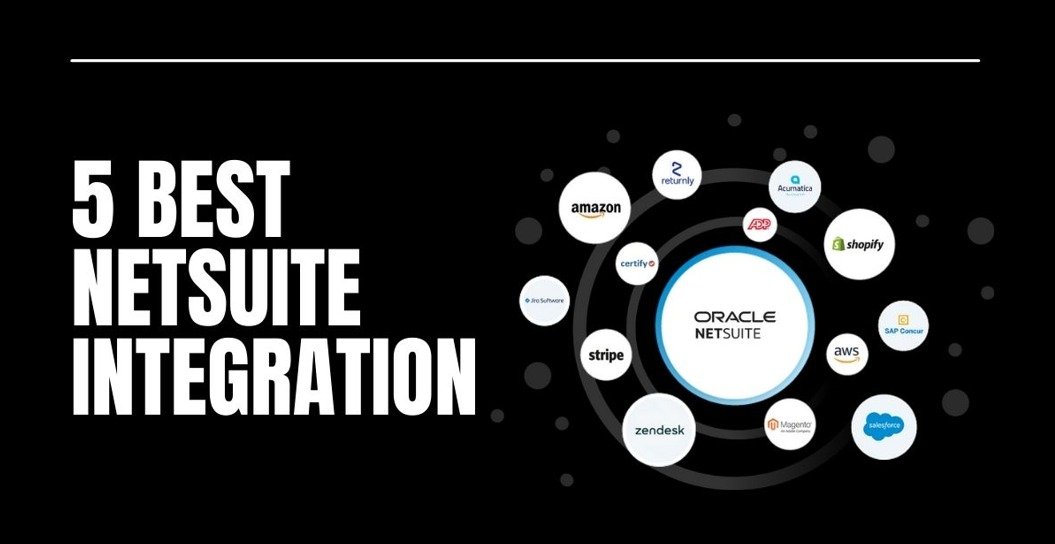In an increasingly complex business environment integration with netsuite companies are leveraging a wide range of specialized software tools to manage their operations. From CRM systems to inventory management platforms, finance solutions, and human resources tools, businesses rely on multiple systems to meet their specific needs. However, managing these disparate systems in silos can lead to inefficiencies, errors, and disconnected workflows. That’s where NetSuite integration comes into play. As a leading cloud-based Enterprise Resource Planning (ERP) solution, NetSuite offers businesses the ability to integrate seamlessly with other software platforms, streamlining operations, enhancing data accuracy, and boosting overall productivity.
What is NetSuite Integration?
NetSuite integration refers to the process of connecting NetSuite’s cloud-based ERP system with other third-party applications, such as CRM, eCommerce platforms, HR tools, financial software, and more. This integration allows for the automatic transfer of data between systems, ensuring that business processes are aligned, accurate, and up-to-date. NetSuite offers a variety of integration methods, from its native APIs to middleware solutions, allowing businesses to integrate their core business processes such as financial management, sales, inventory, and customer relationships, all in real-time.
Why NetSuite Integration is Crucial for Business Efficiency
The need for NetSuite integration is driven by several key factors. First, businesses today operate in a fast-paced, data-driven world. Relying on siloed systems increases the risk of human error, delays in data updates, and inconsistent information. Integration ensures that all systems, including CRM, HR, eCommerce, and inventory management, are connected to NetSuite, facilitating the smooth flow of data across the organization. This leads to better decision-making, increased operational efficiency, and improved customer service.
Second, integrating NetSuite with other systems enables businesses to automate many routine tasks. For example, when a sales order is placed in an eCommerce system, it can automatically be transferred to NetSuite for inventory management and invoicing. Similarly, customer information entered into a CRM platform can be synced with NetSuite for more accurate financial reporting and faster order fulfillment. This automation reduces manual work and human error, ultimately saving businesses valuable time and resources.
Key Benefits of NetSuite Integration
The primary benefits of integrating NetSuite with other business systems are numerous. First and foremost, integration reduces the complexity of managing multiple systems. Instead of having employees enter data manually into several platforms, integration ensures that data flows seamlessly between systems. This reduces duplication of work, minimizes human error, and ensures that all departments are working with the same up-to-date information.
Another significant advantage of NetSuite integration is real-time data synchronization. With integration, all departments—whether finance, sales, marketing, or inventory—have access to real-time data, improving communication, and collaboration. For instance, sales teams can view current inventory levels and sales orders, while finance teams can track revenue in real-time, allowing for faster financial reporting and decision-making.
Moreover, NetSuite integration enables better customer service. When customer data is synchronized across systems, employees can access a complete view of the customer, from order history to preferences, inventory availability, and payment status. This ensures that the customer service team has the information they need to provide personalized, efficient service.
NetSuite Integration Methods: APIs and Middleware
There are several methods for integrating NetSuite with other business systems, each offering different levels of complexity and flexibility. The two main approaches are direct API integration and using middleware platforms.API Integration: NetSuite provides a variety of APIs (such as SuiteTalk, SuiteRest, and SuiteScript) that allow developers to connect NetSuite to third-party applications directly. SuiteTalk, a SOAP-based API, is commonly used for more complex integrations, while SuiteRest (a RESTful API) is ideal for web applications and mobile devices. SuiteScript, a JavaScript-based framework, allows for deeper customization and integration within NetSuite itself. This approach is typically best suited for businesses with complex needs or large-scale integrations.Middleware Integration: Middleware platforms such as Celigo, Dell Boomi, or MuleSoft provide pre-built connectors and integration templates that make it easier for businesses to integrate NetSuite with a variety of applications, including eCommerce platforms, CRM systems, and supply chain tools. Middleware acts as a bridge between systems, enabling data synchronization and process automation without requiring significant custom coding. This approach is often ideal for businesses looking for faster and more cost-effective integration without extensive development resources.
Common NetSuite Integration Use Cases
There are several common use cases for integrating NetSuite with other applications. One of the most common integrations is with CRM systems such as Salesforce or HubSpot. By connecting NetSuite with a CRM, businesses can automatically transfer customer data, sales leads, and order information between systems. This ensures that sales teams have accurate data on inventory, payment status, and customer history, enabling them to close deals faster and more efficiently.
eCommerce integration is another prevalent use case. Integrating NetSuite with eCommerce platforms like Shopify, Magento, or WooCommerce allows businesses to automate order processing, update inventory in real-time, and streamline invoicing and shipping. This integration enhances customer satisfaction by ensuring accurate and timely order fulfillment.
HR and payroll integrations are also common, where businesses connect NetSuite with HR software like Workday or ADP to manage employee records, payroll processing, and compliance reporting. Integrating these systems ensures that employee data is consistent across platforms and reduces the need for manual updates.
Overcoming Challenges in NetSuite Integration
While NetSuite integration offers many benefits, it can also present challenges. One of the main obstacles is data mapping. Different applications store data in various formats, so integrating these systems requires a thorough understanding of how data flows between platforms. Incorrect data mapping can lead to errors, such as duplicated records or inaccurate information.
Another challenge is ensuring security and compliance. Since NetSuite integrates with sensitive business data, it’s essential to follow best practices in security, such as using secure authentication methods (e.g., OAuth) and ensuring that data is encrypted during transmission. Compliance requirements such as GDPR or CCPA must also be taken into account when managing customer data.
Lastly, integrating legacy systems with NetSuite can be challenging, particularly if those systems lack modern APIs or integration capabilities. In such cases, businesses may need to use middleware solutions or develop custom connectors to bridge the gap.
Best Practices for Successful NetSuite Integration
To ensure a smooth and successful NetSuite integration, businesses should follow best practices. First, it’s important to clearly define the goals and scope of the integration. This includes identifying which systems need to be integrated, which data needs to be synchronized, and what processes need to be automated.
Second, businesses should choose the right integration approach, whether that involves using APIs for custom integrations or middleware for more straightforward connections. It’s also important to select integration partners or tools that are well-suited to the specific needs of the business.
Third, testing is essential. Before fully implementing the integration, businesses should thoroughly test the connection to ensure that data is syncing correctly and that workflows are functioning as expected.
Finally, ongoing monitoring and maintenance are crucial. As systems and business processes evolve, the integration may need to be updated to reflect changes in software or business needs.
The Future of NetSuite Integration
As technology continues to advance, the future of NetSuite integration looks promising. One trend gaining traction is the use of AI and machine learning to automate data mapping, error detection, and business process optimization. This will make integrations even more efficient and intelligent, reducing the manual effort required.
Additionally, the rise of low-code and no-code platforms will enable more businesses to implement their own NetSuite integrations without the need for extensive programming knowledge. This democratization of integration tools will make it easier for businesses of all sizes to leverage the power of connected systems.
Conclusionnetsuite integration is an essential tool for modern businesses seeking to streamline operations, improve data accuracy, and enhance collaboration. Whether through APIs or middleware, integrating NetSuite with other applications enables businesses to automate workflows, reduce manual errors, and provide better customer service. While there are challenges to consider, the benefits of seamless integration are undeniable. By following best practices and staying up to date with emerging technologies, businesses can ensure that their NetSuite integration continues to deliver value as they grow and evolve.














Leave a Reply